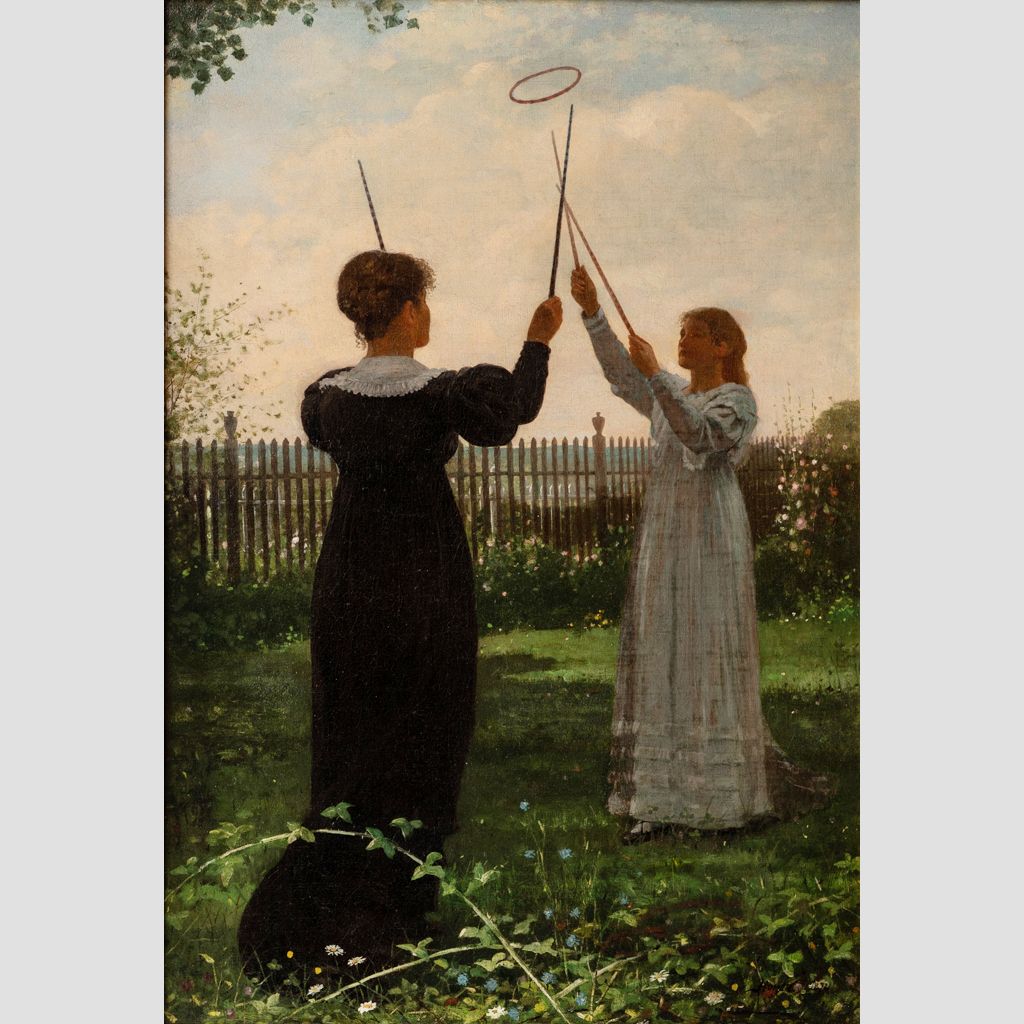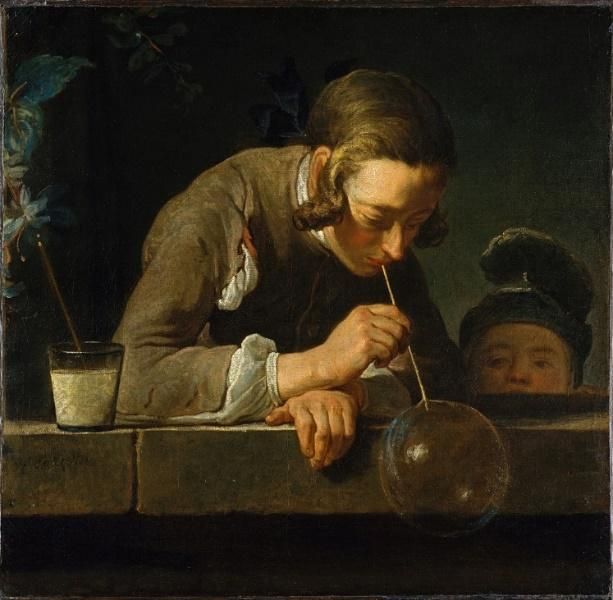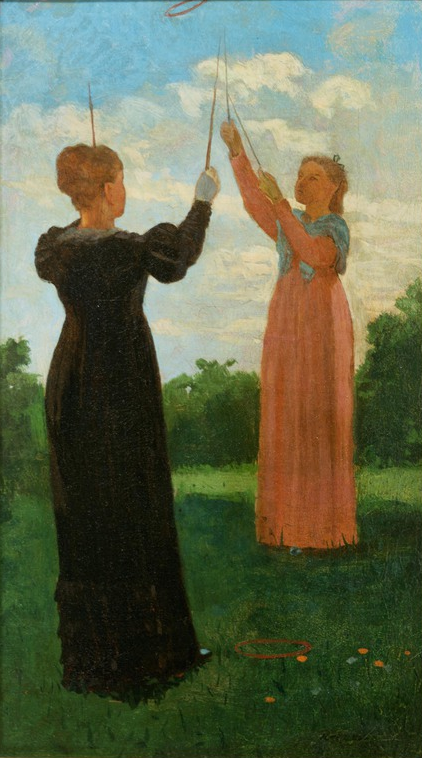
Winslow Homer (1836–1910)
Grace Hoops, 1872
Oil on canvas
McMullen Museum of Art, Boston College, Carolyn A. and Peter S. Lynch Collection, 2021.16

Jeffery Howe
Professor Emeritus, Art History

This charming image of two girls playing a game in the late afternoon or early evening is one of Homer’s most engaging depictions of youth on the cusp of adulthood, including paintings of games of croquet played on the lawn of his father’s house in Belmont, Massachusetts, in the 1860s. Homer followed then-contemporary ideas of gender; these girls are graceful and genteel, unlike the rough-and-tumble boys playing Snap the Whip (1872).
The jeu des graces was a game invented in Europe in the early nineteenth century. Players try to pass and catch a circular hoop with two sticks, making graceful poses. Play is often a rehearsal for adulthood, and the striving for the ring may signify the desire for marriage or success in life. The hoop is suspended high in the air, with the girl on the right poised to catch it. The passage of time is embodied in this frozen instant, and temporality is also implied by the shadowed time of day, the age of the young women, and the flowers (including bachelor buttons) that surround them in the garden. Like Chardin’s Soap Bubbles (see photo), it is one of many images of the fleeting nature of childhood, a traditional vanitas theme.

Oliver Wunsch
Assistant Professor, Art History

A wooden ring hangs in the air, paused in its flight between two young women. They are engaged in the “game of graces,” a popular form of nineteenth-century recreation in which players tossed and caught a hoop using a pair of handheld rods. The game, which had arrived in the United States from France, was said to encourage girls to move gracefully.1 The title of this painting clearly refers to the game, but it may also have been an allusion to the name of the woman in black. She is thought to be Grace Barrett Valentine, who owned Homer’s preliminary sketch for this work (see image), and her brother-in-law, Lawson Valentine, may have purchased the final painting.2
Encouraged by affluent patrons such as the Valentines (owners of a major varnish and paint factory in Boston), Homer increasingly painted such scenes of childhood leisure in the 1870s, turning away from the national strife that had been a recurring theme of his work as an artist-reporter during the American Civil War. Even when representing seemingly anodyne subjects, however, Homer maintained the precision and temporal specificity that had established the credibility of his journalistic work. In a period when lengthy photographic exposure times precluded split-second snapshots, Homer’s paintings conveyed a feeling of arrested animation that no camera could achieve. The hard-edged instantaneity of this composition saves it from mere mawkish sentimentality. Homer clearly delights in the fact that the airborne ring suggests a halo above the figures, but he is equally attentive to the physics of the object, refusing to transform it entirely into a saccharine symbol of angelic femininity.
1. For an instructive description, see Lydia Maria Child, The Girl’s Own Book (New York: Clark Austin & Company, 1833), 105–6.
2. Lloyd Goodrich, Record of Works by Winslow Homer, ed. Abigail Booth Gerdts (New York: Spanierman Gallery, 2005), 2:181–83.

